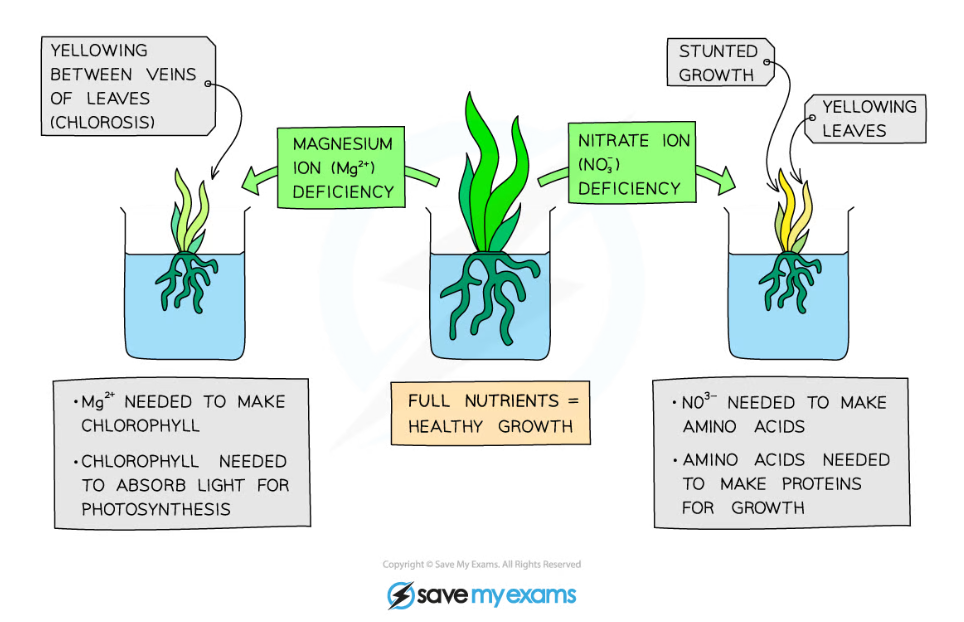- 翰林提供学术活动、国际课程、科研项目一站式留学背景提升服务!
- 400 888 0080
Edexcel A (SNAB) A Level Biology:复习笔记4.2.3 Importance of Water & Inorganic Ions to Plants
Importance of Water & Inorganic Ions to Plants
- Plant cells perform a variety of different functions
- In order to perform these functions efficiently, the plant requires water and inorganic ions (minerals)
- They are absorbed through the root hairs on the root and travel up the stem in xylem vessels
- A plant will show certain symptoms (e.g. yellow leaves, stunted growth) when there is a deficiency in any one of these substances
Water
- Important component required for photosynthesis
- Provides a transport medium for minerals
- Maintains turgidity in plant cells though pressure in cell vacuoles
- Regulates temperature - to ensure that enzymes can function at their optimum rate
Magnesium ions
- Important requirement for the production of chlorophyll
- This provides the green colour of stems and leaves and is essential for photosynthesis
Nitrate ions
- Without nitrate ions, the plant would be unable to synthesise DNA, proteins and chlorophyll
- Enzymes are important proteins for which nitrate ions are needed
- These molecules are essential for plant growth, as well as the production of fruit and seeds
Calcium ions
- These form important cell wall components
- Plants require calcium ions for proper growth

Diagram showing the importance of magnesium and nitrate ions for plants
Practical: Investigating Plant Mineral Deficiencies
- The following experiment could be done with any one of the mineral ions mentioned earlier
- For this example, the focus will be on investigating the effect of a calcium deficiency on plants
Apparatus
- Nutrient broths
- Test tubes
- Seedlings
- Aluminium foil
- Mass balance
Method
- Prepare three nutrient broths containing every mineral that a plant requires, but with different concentrations of calcium ions in each (high, medium and low)
- Label three test tubes for each of the nutrient broths (three 'high', three 'medium' and three 'low' = nine in total)
- Take nine seedlings, ensuring that they are from the same plant and are the same age, and record the mass of each
- Place one seedling on top of each test tube, suspending the roots in the nutrient broth
- Cover the test tubes with aluminium foil to keep light away from the broth
- Place the test tubes near a source of light and leave them for a few days
- Remove each plant from the broth and carefully blot it dry before measuring the mass again
- Record the end mass and use that to calculate the mean change in mass of the plants for each of the different nutrient broths
- Make a note of any physical differences between the plants of the different groups
Variation of the practical
- Another variation of the experiment mentioned above, is to investigate the effect on plant growth when the mineral is completely lacking
- In this experiment you would have broths that contains all of the minerals, except the one that is being investigated
- There would also need to be two control broths
- One would contain all the minerals
- The other would contain no minerals
转载自savemyexams

最新发布
© 2026. All Rights Reserved. 沪ICP备2023009024号-1









